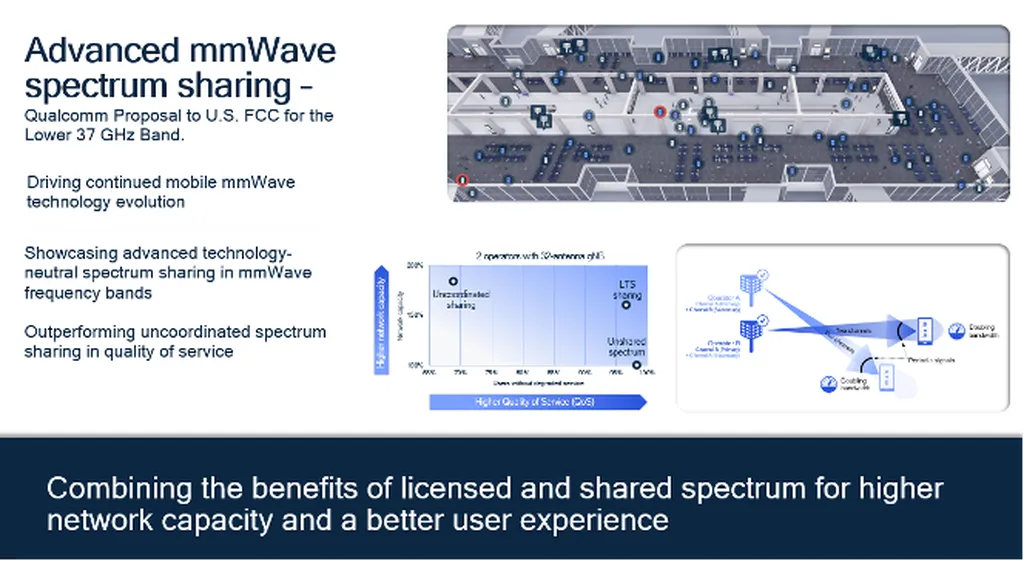The upper mid-band, spanning roughly from 7 to 24 GHz, has emerged as a focal point for the next generation of cellular services. This frequency range offers a substantial advantage over the congested bands below 7 GHz by providing vastly more spectrum while maintaining better propagation and coverage compared to millimeter wave (mmWave) frequencies. The upper mid-band’s unique characteristics make it a powerful and complementary frequency range, capable of balancing coverage and capacity in ways that lower and higher bands cannot match alone.
However, unlocking the full potential of this band presents significant challenges. The upper mid-band is already shared with various incumbents, including communication satellites, military RADAR, and radio astronomy. This necessitates fundamental changes in the design of cellular systems to ensure coexistence and minimize interference. One of the key requirements is the development of agile cellular systems that can sense and intelligently utilize the large spatial and frequency degrees of freedom available in this vast frequency range. The directional nature of transmission and the intermittent occupancy of incumbents further complicate the scenario, demanding innovative solutions for dynamic frequency selectivity.
A recent study led by researchers Seongjoon Kang, Marco Mezzavilla, Sundeep Rangan, Arjuna Madanayake, Satheesh Bojja Venkatakrishnan, Gregory Hellbourg, Monisha Ghosh, Hamed Rahmani, and Aditya Dhananjay provides an initial assessment of the feasibility and potential gains of wideband cellular systems operating in the upper mid-band. The research is divided into three key areas: a system study to evaluate the potential gains of multi-band systems in a dense urban environment, an evaluation of potential cross-interference between satellites and terrestrial cellular services, and the design and evaluation of a compact multi-band antenna array structure.
The system study highlights the value of wideband systems with dynamic frequency selectivity in a dense urban environment. By leveraging the additional spectrum available in the upper mid-band, cellular systems can achieve significant improvements in both coverage and capacity. The study demonstrates that multi-band systems can dynamically adjust their frequency usage to optimize performance, ensuring robust connectivity even in challenging urban settings.
Interference management is another critical aspect addressed in the research. The study evaluates potential cross-interference between satellites and terrestrial cellular services, which is a significant concern given the shared use of the upper mid-band. The researchers propose interference nulling techniques to mitigate this issue, ensuring that both satellite and terrestrial services can operate effectively without compromising each other’s performance. This is particularly important for maintaining the integrity of military RADAR and radio astronomy operations, which are critical for national security and scientific research.
The design and evaluation of a compact multi-band antenna array structure represent another significant contribution of the study. The antenna array is designed to support the wide frequency range of the upper mid-band, providing the necessary directional transmission capabilities. The compact design ensures that the antenna can be integrated into existing cellular infrastructure without significant modifications, making it a practical solution for future deployments.
The preliminary results of this study identify several potential future research directions to realize next-generation systems in these frequencies. These include further exploration of dynamic frequency selectivity, advanced interference mitigation techniques, and the development of more compact and efficient antenna designs. By addressing these challenges, the upper mid-band can become a cornerstone of next-generation cellular networks, providing the necessary spectrum and performance to meet the growing demands of modern communication.
In conclusion, the upper mid-band offers a promising solution to the spectrum crunch faced by current cellular networks. By leveraging the vast spectrum available in this range and developing innovative solutions for coexistence and interference management, the upper mid-band can play a crucial role in the evolution of cellular technology. The research conducted by Kang, Mezzavilla, Rangan, Madanayake, Venkatakrishnan, Hellbourg, Ghosh, Rahmani, and Dhananjay provides valuable insights into the potential gains and challenges of operating in this frequency range, paving the way for future advancements in cellular communication. Read the original research paper here.

